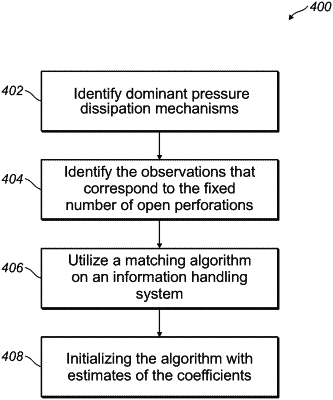| CPC E21B 49/008 (2013.01) [E21B 43/26 (2013.01); E21B 47/06 (2013.01); G06F 17/17 (2013.01)] | 20 Claims |

|
1. A method, comprising:
conducting a pumping operation comprising pumping a treatment fluid into a subterranean formation;
creating at least one fracture in the subterranean formation;
obtaining pressure measurements from a pressure sensor during the pumping operation;
identifying one or more pressure dissipation mechanisms within a fluid handling system from at least the pressure measurements, wherein the one or more pressure dissipation mechanisms comprise a perforation resistance and a tortuosity resistance;
identifying one or more active flowpath elements from the pressure dissipation mechanisms;
performing a matching algorithm with an information handling system using the pressure dissipation mechanisms; and
initializing the matching algorithm with an estimate of a coefficient.
|